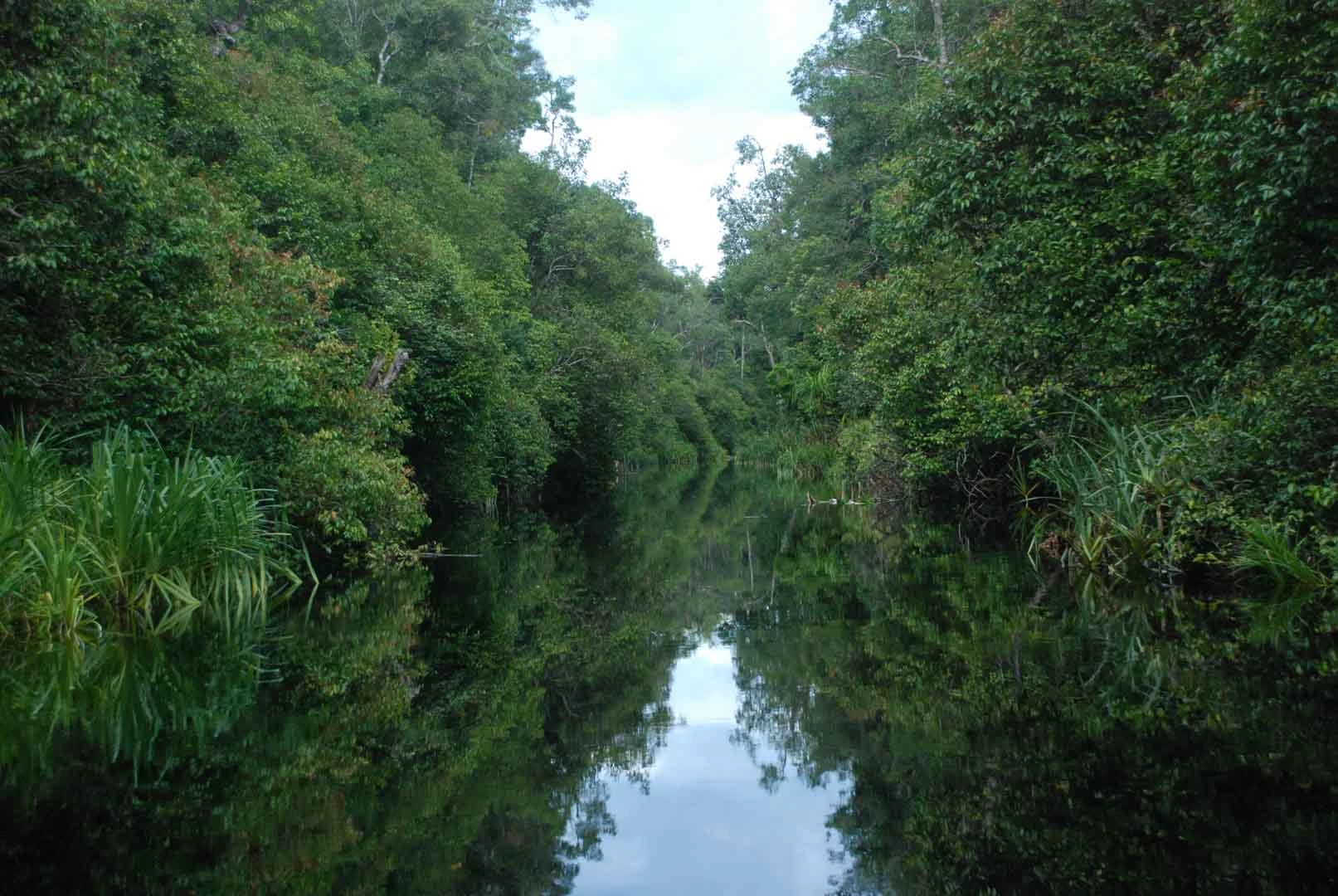Protecting the last habitats for orangutans
Tropical swamp forests belong to the world's most efficient carbon sinks. In the project area on the Indonesian island of Borneo, this type of forest has another unique function: it is one of the two remaining habitats for wild orangutans. Not only orangutans but also countless other animal and plant species are severely affected by the ongoing deforestation, driven by the palm oil industry. At the same time, the clearing of the swamp forest releases CO2 as well as large amounts of the particularly climate-damaging gas methane.
Our project protects 64,000 hectares of rainforest by offering people in the region alternative sources of income to illegal deforestation. For example, they work on community farms for controlled rubber harvesting. The project contributes to the preservation of Borneo's high biodiversity with up to 1,000 plant and animal species per square kilometer.
How does forest protection help fight global warming?
Forests are not only among the planet's most important carbon reservoirs. They also are home to an enormous diversity of species and are the livelihood for all people. However, global forest areas have declined sharply in recent decades due to increasing settlement, agricultural use, illegal logging and mining.
Forest protection projects ensure that forests are preserved in the long term and that the protection of forests is given a higher value than their deforestation. Together with the local population, project participants protect the area from negative influences. To allow for this the projects create alternative sources of income and educational opportunities. Depending on the project region, forests store varying amounts of carbon per hectare. Particularly high amounts of carbon are stored in the vegetation and soil of tropical swamp forests, primary rainforests, or mangroves.





